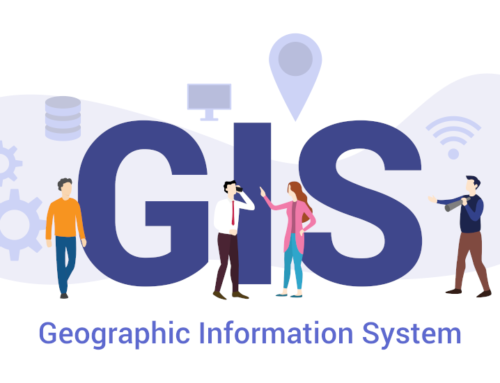 What are municipal assets? These are assets that provide services to your community such as streets, water, waste water and stormwater infrastructure. Municipal assets (or any county, state or province assets) provide essential, non-essential, and supplementary services to the community. It’s important to simplify with a local government asset management system.
What are municipal assets? These are assets that provide services to your community such as streets, water, waste water and stormwater infrastructure. Municipal assets (or any county, state or province assets) provide essential, non-essential, and supplementary services to the community. It’s important to simplify with a local government asset management system.
Local governments (which can also include any public sector or other public institutions) maintain capital-intensive assets, with water and sewer systems as just a few of the most expensive assets to manage. To reduce costs, it’s crucial to focus on maintenance and repairs, as well as to inspect and track these assets with regular condition assessments.
Putting a local government asset management software system in place can greatly help manage your capital investments infrastructure. You can begin by inventorying your assets by their importance. While the initial inventorying process can be labor intensive, the investment is offset as efficient asset management reduces costs. As assets age and replacements are on the horizon you’re faced with serious decisions. At the same time, there are competing priorities and limited budgets to contend with. Using local government software to manage your critical assets will give your assets a longer life cycle and help your dollars go further.
You can’t make effective maintenance decisions without measuring asset criticality ratings and routine condition assessments. This also provides council members with accurate information to support asset decisions and recommendations (disposal, repair, and replacement options.)
How do you begin a local government asset management strategy?
- Start Asset Records: These records are essential to improvement and repair decisions. The first step in using asset tracking software for record keeping is labeling and tracking each asset. What’s in an asset file?
- A unique identification number.
- Detailed characteristics and attributes.
- Asset documentation including manuals, drawings, images, and certificate of ownership.
- Condition assessments, repair parts, operation and maintenance records.
- A comprehensive historical maintenance record for each asset.
Asset records are like a foundation to build your house upon. As you record information, you’re building healthy municipal asset management system.
- Determine Criticality Ratings: These ratings help you maintain a strong preventive maintenance plan. It’s important to focus your maintenance efforts and resources on critical equipment. So, what do you need to begin?
- A unique asset number.
- Purpose and location of the asset.
- Asset installation date and up-to-date records of maintenance performed.
- Replacement and repair cost information (if available).
- Liability to the community in the event of asset failure.
- An effective preventive maintenance schedule.
A local government asset system helps you track and measure the most essential community assets. Knowing which assets are critical, essential, and non-essential keeps your community safe and thereby making it easier to direct your resources appropriately.
- Determine Maintenance with Condition Assessments: It’s crucial to use these assessments determine the risk of failure. They establish the baseline asset health and track changes over time. Without a condition baseline, it’s impossible to recognize risks. What’s the purpose of condition assessments?
- They establish the current condition of assets to help prioritize and predict maintenance.
- Assessments help you understand the level of deterioration to determine the probability of failure.
- They help you develop a maintenance strategy that minimizes total cost of ownership and improves condition and performance.
Tracking condition assessments provides a valuable historical record. Thus, giving you the ability to prevent and predict the likelihood of equipment failure.
- Determine Levels of Service: Assets provide service to your community. The level of service is an asset job description or contract. The service level is a standard asset performance expectation. Over time you track how well they are meeting those expectations to anticipate repairs. Without service level measurements, it’s impossible to avoid untimely repairs and replacements. When you know what to expect you are better able to plan ahead. What information do you need to determine infrastructure asset level of service?
- Determine how critical the asset is to the community and the adverse effects of breakdown.
- The condition of the asset including the age and maintenance performed.
- Are there any external issues documented that could affect the asset service such as, new construction or weather?
- A detailed description of planned and unplanned maintenance over the life of the asset.
- A comprehensive list of proposed expansions or upcoming work.
As you track your assets with a local government asset system, you can measure performance over time and make better decisions. These service standards help you keep the community operational and safe.
- Build Municipal Asset Reports: Reports help sort asset information based on a variety of criteria. They provide comprehensive and summarized data for council members and budget meetings. How do you justify getting funds for crucial repairs without these reports? It’s important to have access to reports to justify the use of funds before asset repairs become critical.
What type of data can you view on a local government asset system report?
- Asset inventory and criticality ratings
- Condition assessments
- Assets by category (e.g. public works, streets, water, parks & rec, tourism)
- Asset maintenance costs
- Summarized asset data from every department.
Municipal reports can classify specific asset failures and help you make informed recommendations. They keep council members mindful of upcoming needs and safe from the consequences of critical asset failures.
- Budgeting for Municipal Assets: The reality is that most governments have limited resources. Therefore, it’s sensible to budget and disperses funds appropriately. Granted, it’s difficult to maintain asset maintenance and consider repair investments at the same time. What will simplify the way you divide municipal resources?
- A well-maintained asset expense record (painting, parts ordered, and labor costs) helps you choose the best place to invest funds.
- Regular condition assessments provide up-to-date asset performance information.
- Depreciating your assets can encourage re-investments and enable replacements.
With the help of a local government asset system, you have precise operating cost information at your fingertips. In other words, you simultaneously plan a cost-effective and least disruptive asset maintenance plan. Because, when you can’t see the road ahead, it’s impossible to avoid an accident.
It’s crucial to make careful financial and management decisions to maintain critical assets for future generations. Let Novo Solutions help you determine your asset management road-map. Request a demo today to learn more about the Novo Solutions Local Government Asset Management System.





